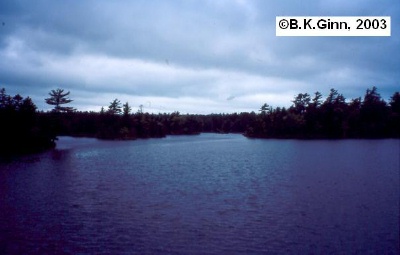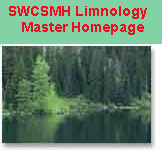Disclaimer & Copyright Notices; Optimized for the MS Edge

Papermill Lake, Bedford
Soil & Water Conservation Society of Metro Halifax (SWCSMH)
Updated: August 08, 2018 
Caution: Since Papermill is a shallow lake, the standard limnetic (i.e., open water) trophic parameters may not represent the true trophic status of the lake
Acknowledgements
Contents:
Chemical vs Biological monitoring

Select scientific modelling and chemical/biological limnology are part of our miscellaneous archives
The bathymetric map; the morphological data; the watershed plan; the Papermill Lake watershed flow chart; peruse our predictive modelling, and view the relevant model; the paleolimnology of lakes in the HRM
Deep station total phosphorus (TP)- comparison with our hindcast models; October 18, 2013
Phosphorus:-
Details on LCC (Lake Carrying Capacity)/Threshold values of lakes, and
comparison with artificially high values chosen by the HRM; March 14, 2014
Our submission to the Regional Council dated June 12, 2006 delves into some detail.
The Predictive TP/Cha base model along with control field data elucidates total correspondence even with latter data.
As the year-2004 CCME Policy
on Phosphorus (TP) clearly narrates that not adhering to the
reference/background (i.e., the natural pre-development value) + 50%
maximum increase concept, even if they fall within the
reference/background trigger ranges, could result in significant
changes to the `COMMUNITY STRUCTURE' (cf. eutro1, and eutro2).
Our original recommendation
was not based on the CCME's year-2004 policy since the recommedations
were developed during the mid-1990s. While the CCME's policy was based
on a 1991 paper published by NALMS (Hutchinson et al., 1991), nevertheless, it was not the official policy of CCME until year-2004.
Also see our original submissions to the BWAC: July 27 and Sept. 15, 1996
Total stormwater treatment recommended:
Total stormwater treatment should also include removal of other urban pollutants as well, not just phosphorus. The CDS technology, the Stormceptor, and the Vortechnics are superb devices for pre-treatment, but they have to be followed by sophisticated polishing systems, for example a scientifically designed wetland with the attendant maintenance in perpetuity. This combination may or may not work (see the note of caution).
A note of caution: There have been conflicting results in the long term removal of typical stressors in storm drainage
using constructed (or engineered) wetlands. Further, such wetlands have
not had a successful history in the amelioration of acid drainage in
HRM. Hence, the only sustainable methodology would be treatment of
urban and suburban stormwater by traditional wastewater treatment plants (WWTP)
based on the tertiary removal process in the case of stressed lakes!
This implies considerable capital costs and operation & maintenance.
The other option is to disallow any further development similar to what residents in Lower Sackville triumphed at Second Lake after years of intense lobbying. Even there, significant amount of chemical and biological limnology was conducted by us.
Our original submissions to the BWAC: July 27 and Sept. 15, 1996:
Pursuant to the concerns expressed by some
local stakeholders at Papermill Lake over the whole last decade
together with our own scientific concerns, we had written the Bedford
Waters Advisory Committee (BWAC)
twice during the 1990s requesting that they set a ethical `lake
carrying capacity' as an yearly average TP (total phosphorus), yearly
average chlorophyll-a and yearly peak chlorophyll-a values. Usually
setting all three as the maximum allowable values would be the most
preferable, but as a compromise, TP is sufficient. We also made
approximately four (4) presentations to the BWAC as well as to the Town
of Bedford's full Council during the 1990s.
The Bedford Waters Advisory Committee (BWAC) did indeed support us, and pursuant to their support, the North West Community Council (NWCC) was also in favour of our recommendation. But nothing has transpired on a pragmatic level to date.
Concerns of stakeholders and statements by Government agencies
- Developer plans lawsuit against councillor opposed to 340-home project; September 13, 2005
- Media statement by Councillor Len Goucher of Dt. 21; April 29, 2003 pursuant to our major press release to the dedicated reporter, Ms. Kim Moar, as well as our clarification to the Editor, of The Daily News, in April of 2003

- Comments of Tony Blouin of HRM on request by the North West Community Council; June 20, 1996
- Lake's origins and concerns of residents
- Bedford residents say `no' to a major development proposal. The Halifax Herald Ltd., 1994
- Dams on the lake- Andre Ducharme, Director, Habitat Management Branch, DFO; February 06, 1991
- A campaign to save Paper Mill Lake by the "Save Paper Mill Lake Committee"; March 28, 1990
- At times, the so-called `battle' can get `hot' as in the media article
- Strong concerns of the Bedford Waters Advisory Committee (BWAC), Town of Bedford: February 05, 1990
Comments of Tony Blouin of HRM on request by the North West Community Council:
![[Img- blouin_1996-1]](PIC/blouin_1996-1.jpg)
![[Img- blouin_1996-1]](PIC/blouin_1996-2.jpg)
Dams on
the lake and the need, if any, for fish passage-- Andre Ducharme,
Director, Habitat Management Branch, DFO; February 06, 1991:
![[Img- ducharme1.jpg]](PIC/ducharme1.jpg)
![[Img-ducharme2.jpg]](PIC/ducharme2.jpg)
Acknowledgements
Google Earth for the maps


We salute the Chebucto Community Net (CCN) of Halifax, Nova Scotia, Canada for hosting our web site, and we applaud its volunteers for their devotion in making `CCN' the best community net in the world!

![]()

![[Img- blouin_1996-1]](PIC/blouin_1996-1.jpg)
![[Img- blouin_1996-1]](PIC/blouin_1996-2.jpg)
![[Img- ducharme1.jpg]](PIC/ducharme1.jpg)
![[Img-ducharme2.jpg]](PIC/ducharme2.jpg)